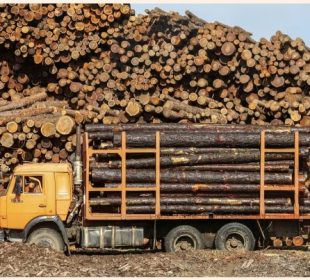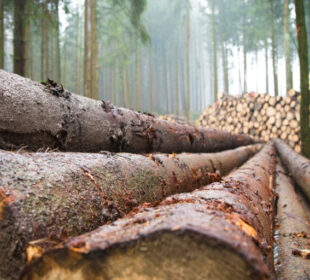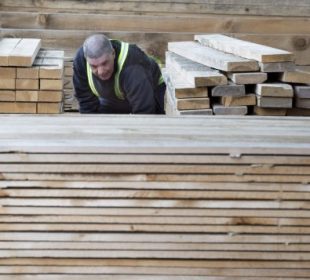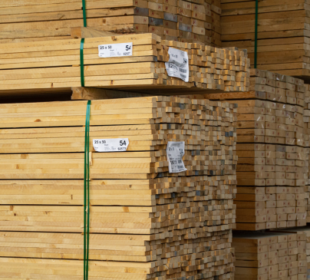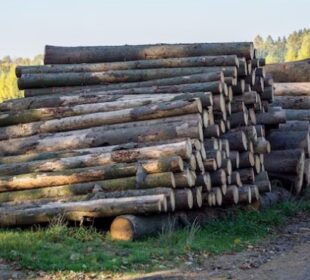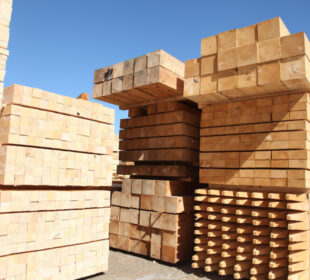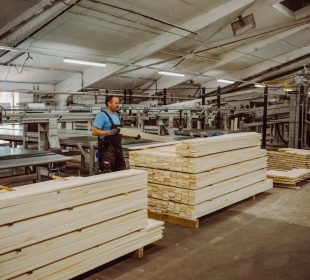The production volumes in the Estonian timber industry today are at the highest level of all time.
Over the last 5 years, the production has increased by 28%, while in the European Union as a whole it has dropped by 2%. The sub-sectors where entrepreneurs managed to increase export volumes the most in 2015 were wooden pellets (32%), prefabricated timber houses (21%) and plywood (19%).
The investments made give reasons to expect that the export volumes of plywood will keep increasing this year as well, and new sawmills are about to be completed in various locations in Estonia. The financial performance of the Estonian timber industry has been strong and the foundation for new growth has been laid.
Expectations of timber Estonian entrepreneurs for 2016
What are the turnovers and profits forecast by entrepreneurs? Are investments made and for what purpose? Do they need labour and what skills are they looking for? Swedbank and the Estonian entrepreneurs tried to find answers to these and many other questions in a recent survey of industrial companies. Swedbank organised the survey for the fifth year running. This year Swedbank received responses from 370 industrial companies in Estonia. There were 61 timber companies among them, which employ 4627 people between them and represent 605 million euros of the sector’s sales turnover.
Turnover and profitability are growing
Confidence in the Estonian timber industry has decreased somewhat in the last three years, but there is moderate optimism about the current year. Approximately two-thirds of companies in the timber industry are planning to achieve bigger sales than last year. The forecast increase in turnover is 6.8%, which is a strong improvement compared to the 5.2% increase expected last year, and as a whole is the highest expected growth among industrial sectors (the average therein being 4.4%). In terms of an increase in profitability, Estoniaana entrepreneurs are just as positive as a year ago – two of five companies expect profitability to improve, yet it will remain 7% lower than the average of industrial sectors.
Opportunities seen on domestic market as well
The majority of the production volume of the timber industry moves to foreign markets, which makes timber products the biggest balancer of the Estonian foreign trade balance. Entrepreneurs believe that the share of export sales in turnover will remain at the earlier level of 73%. This is higher than the Estonian industry average (65%). While the share of export sales in total sales in other industrial sectors mostly increased and the expectation of domestic sales turnover decreased, opportunities for increasing turnover on the domestic market are also seen in the timber industry. The investments made in recent years have raised the competitiveness of timber post-processing in Estonia to an excellent level, which is why sawmills estimated that their prospects of increasing sales are better at home than on foreign markets.
Exports are well spread across markets
The exports of the Estonian timber companies that took part in the survey are better balanced across foreign markets than in any other industrial sector. This is also illustrated by the fact that the 10 main export markets of sawn and planed timber - the biggest sub-sector of the timber industry - include both Australia and the Republic of Korea. As a whole, the Estonian sector sees Finland as its most important target market this year, and yet it only comprises 16% of sales. Finland is followed by Germany (14%), Sweden (12%), Norway (10%) and Latvia (8%). New opportunities are seen in Estonian traditional trade partner Sweden (35%), although interestingly, the second most popular answer is the United Kingdom - a market that every fourth timber company has set its sights on.
Production capacity has improved
The investments made last year in Estonia focused mainly on increasing volumes. Almost half of Estonian entrepreneurs made investments in 2015 in order to increase production volumes. The investments made have been successful and the share of available production capacity has improved consistently (13% -> 16% -> 20%). One-fifth of available production capacity is the level maintained by Estonian industry as a whole in recent years, allowing companies to react quickly to new orders. However, there are timber companies whose growth is held back by the lack of sufficient production capacity – one-tenth of respondents.
Weak foreign demand is the biggest obstacle
Weak foreign demand is the biggest obstacle in increasing the sales of Estonian timber companies. Uncertainty on foreign markets has made entrepreneurs cautious and their desire to increase volumes has decreased noticeably. The focus has turned to the development of one’s value propositions and improvement of one’s competitive position. Estonian companies want to produce in a more effective and smarter manner. This means that fewer investments will be made in infrastructure – establishing production facilities or launching new production units – this year. The focus is on finding opportunities for calibrating the capacities established in previous years and optimizing activities in the different stages of the production process.
Goal of timber industry investments
The majority of respondents are planning investments; half of the companies intend to keep their investments at the same level as last year; and one-third will increase their volume of investments. Every fourth respondent is planning to invest more than half a million euros this year. Investments are aimed at improving efficiency, which is confirmed by the increased interest in replacing outdated production equipment (2% -> 8%). Product development has started to receive a lot of attention in the search for new sources of growth. The fact that development activities focus on the creation of more complex products is underlined by the fact that one-fifth of timber companies have already started or are planning to start cooperating with research institutions.
We can find managers and unskilled labour - we need specialists
Almost half of Estonian timber industries are held back by a shortage of labour - a trend that has persisted for many years. More than one-third of timber companies have automated their production with IT or are planning to do so in order to improve the situation and increase competitiveness. However, automation has not led to a significant decrease in the need for labour, but has caused some structural changes. Instead of unskilled workers, companies now need an increasing numbers of specialists who can operate the expensive and complicated machines.
Wage costs will increase, but the number of employees will remain the same in 2016
The average wage in the timber industry is 5% higher than the industry average and has remained higher than the Estonian average in recent years. The majority of Estonian timber companies offer decent wages and career opportunities outside country centres. Timber companies often use a performance pay system, which allows good employees to earn considerably more than the average wage. The average wage increase since 2009 has been 45%, which in terms of gross wages means an increase from 750 euros to ca 1100 euros. Entrepreneurs regard the need to adjust wages as similar to that in the previous year – wage costs will increase in more than half of timber companies, and wages will go up by 3.2%.
Source: Swedbank




